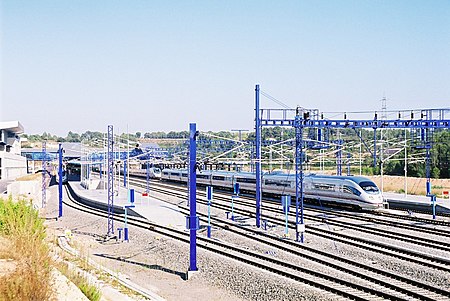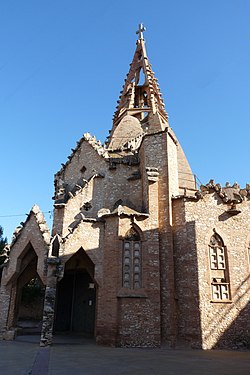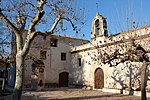Camp de Tarragona railway station
Madrid–Barcelona high-speed rail lineRailway stations in CataloniaRailway stations in Spain opened in 2006Transport in Tarragonès

Camp de Tarragona is a railway station, opened on 19 December 2006, on the Madrid-Barcelona high-speed rail line between Madrid and Barcelona. Located between the municipalities of La Secuita and Perafort, some 8 km north of Tarragona itself, the new station serves an area with an estimated population of over 400,000. The station complex, covering 5.2 hectares, has eight standard-gauge tracks (four platform tracks and four central through tracks), two 400-metre-long island platforms, passenger handling facilities, a travel centre, shops, and parking for 648 vehicles. The high speed railway to the French frontier opened for service in 2013.
Excerpt from the Wikipedia article Camp de Tarragona railway station (License: CC BY-SA 3.0, Authors, Images).Camp de Tarragona railway station
Geographical coordinates (GPS) Address Nearby Places Show on map
Geographical coordinates (GPS)
| Latitude | Longitude |
|---|---|
| N 41.192180555556 ° | E 1.2740638888889 ° |
Address
43154
Catalonia, Spain
Open on Google Maps










